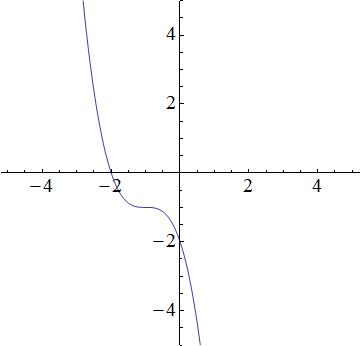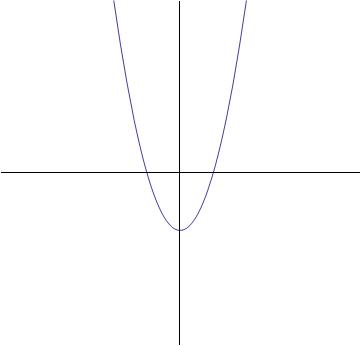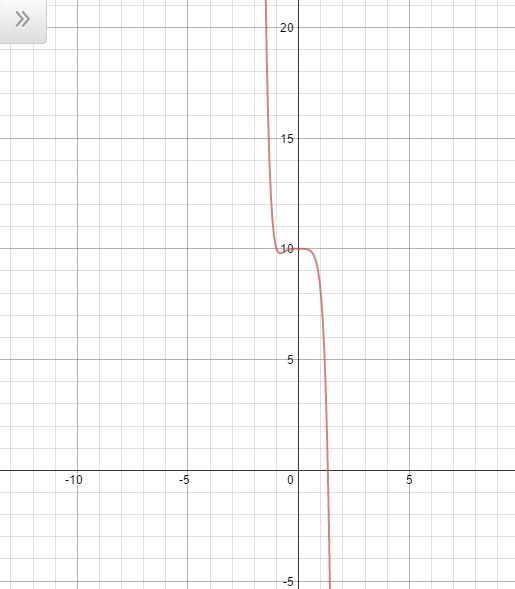All SAT II Math I Resources
Example Questions
Example Question #22 : Graphing Functions
Where does 

5
7
-7
-3
3
7




Example Question #142 : Functions And Graphs

Which of the following is an equation for the above parabola?
The zeros of the parabola are at 


each of their signs is reversed to end up with the correct sign in the answer. The coefficient can be found by plugging in any easily-identifiable, non-zero point to the above formula. For example, we can plug in 

Example Question #422 : Sat Subject Test In Math I
Which equation best represents the following graph?

None of these
We have the following answer choices.
The first equation is a cubic function, which produces a function similar to the graph. The second equation is quadratic and thus, a parabola. The graph does not look like a prabola, so the 2nd equation will be incorrect. The third equation describes a line, but the graph is not linear; the third equation is incorrect. The fourth equation is incorrect because it is an exponential, and the graph is not an exponential. So that leaves the first equation as the best possible choice.
Example Question #1 : Understand Linear And Nonlinear Functions: Ccss.Math.Content.8.F.A.3
Which of the graphs best represents the following function?


None of these



The highest exponent of the variable term is two (
The graph below will be the answer, as it shows a parabolic curve.

Example Question #1 : Graphing Polynomial Functions
Which of the following is a graph for the following equation:
Cannot be determined





The way to figure out this problem is by understanding behavior of polynomials.
The sign that occurs before the 

Example Question #22 : Graphing Functions
Define a function 



Which of the following statements is correct about 
Define 


By the Intermediate Value Theorem (IVT), if 





Evaluate 
Only in the case of 





Example Question #1 : Solving Functions From Word Problems
At Joe's pizzeria a pizza costs $5 with the first topping, and then an additional 75 cents for each additional topping.
If 
Notice that the question describes a linear equation because there is a constant rate of change (the cost per topping). This means we can use slope intercept form to describe the scenario.
Recall that slope intercept form is
The value of 






Notice that the first topping is included in the $5 cost. The 
Putting all these steps together we get:
All SAT II Math I Resources












































